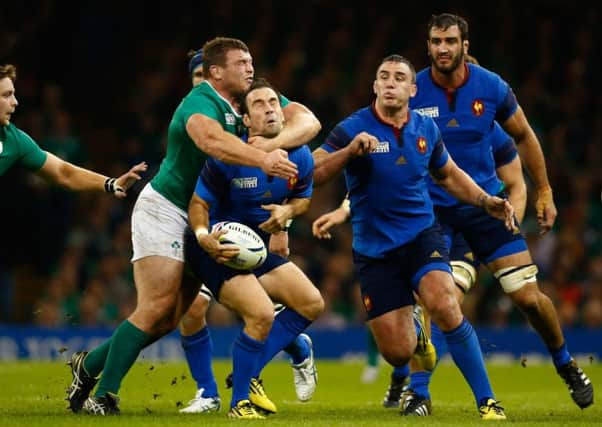Allan Massie: Law-makers must make it profitable to go low


No one exemplified Glasgow’s wayward play more than Adam Ashe. He scored a splendid try with a powerful old-fashioned hand-off – one way to counter a high tackle, and then threw out the sort of loose pass to nobody in the in-goal area. He should get someone to expunge this moment from the video before Vern Cotter sees it.
Still he wasn’t the only Glasgow player whose mind seemed at times to go walkabout. Even Henry Pyrgos, usually such a calm and controlling influence, was oddly hesitant and threw out some shockingly bad passes. All very rum.
Advertisement
Hide AdAdvertisement
Hide AdSome have said that Treviso would have won if they had kicked their penalties. This is nonsense of course. You can reasonably add the two points for a missed conversion to the score, but if a penalty goal is scored, everything is subsequently different. The game is restarted from half-way, and whatever might follow is unknown. Actually, as it happened, one Treviso penalty hit the post, and led almost immediately to a try which was converted: seven points instead of the three they would have had if the attempt at goal had been successful.
This will be the first weekend when the new instructions to referees with regard to high tackles are in force. Naturally there is speculation about the unforeseen consequences of the regulations. Stuart Barnes had a piece in The Times yesterday in which he argued that, if they were stringently applied, it would be all but impossible lawfully to shift the supporting player who “jackals” over the ball, feet firmly planted wide-apart, and head lowered. If so, Barnes suggested, turnovers would be rare, and teams wouldn’t compete for the ball at the tackle. Perhaps; though the inability to shift a player arching over the tackled ball-carrier must surely apply equally to the first man up on the tackling side, or indeed to the tackler who immediately regains his feet to get over the ball.
That there will be unforeseen consequences is certain; there always are to any law change. If, however, the intention is not only to eliminate dangerous play, or at least to reduce its frequency, the law-makers may need to ask more questions. Undoubtedly punishing the head-high tackle more severely should have an effect. Coaches will not be happy to have their players carded.
But the real questions are surely: first, why has the tackle round the thighs and lower, which used to be the norm, fallen out of favour, and second, why have tackles crept higher and higher?
The answer must surely lie in what happens to the ball after the tackle. The choke tackle ties it up. The chest-high tackle in which the ball-carrier’s arms makes off-loading – passing out of the tackle – more difficult, except for a player with the remarkable dexterity of a Leone Nakarawa. So, with laws as they are, or have been, there are many situations in which it makes sense to tackle high. Moreover the hard, high, front-on tackle, now admiringly acclaimed as “a big hit”, may dislodge the ball to the advantage of the tackler’s team.
So if the law-makers really want to see a reversion to the old practice of tackling low, they must seek ways of making this more profitable for the tackling side than it is now, ways which will have coaches insisting that this is the best way to tackle.
This probably requires lengthy examination of the consequences of both high and low tackles. One law change suggests itself. It used to be illegal for the tackled player to pass the ball after he had been brought to ground. The old law was changed to make for greater fluency and more tries. Fair enough, you may say; we all want to see that sort of thing. But one unforeseen consequence of this law change was to make the classic low tackle less profitable. If the tackler has gone in above the waist, the ball is probably smothered. If he has gone in low, the tackled player on the ground has his arms free and is able to pass. A reversion to the old law might be beneficial. As I say, if you want low tackling, you must seek to make it more profitable than going in high.